How to Set Sleep Timer on Laptop Windows 10
Sleep mode is a low power mode in computers where this mode saves plenty of electrical consumption. Upon resume, the device loads the last session so you avoid the hassle of opening applications or starting your work again. The machine state is held in RAM; when issued the sleep command, the computer powers off un-needed processes and sets the RAM to the minimum power state.
Because of the power-saving state, you can also set timers to make your laptop go into sleep mode automatically. However, many users reported that after the upgrade to Windows 10, their computer won't sleep automatically like it used to. This problem can be traced back to many reasons such as a controller disrupting the sleep timer of your computer or a third-party application keeping the computer awake. Follow the solutions from the top and work your way down.
How to check if Sleep Mode is actually enabled?
Before we move on with the troubleshooting, we will check if the sleep mode is actually enabled on your computer. There is a specific timer in the system. If the computer remains unused for that period of time, it goes into sleep mode automatically.
- Right click on the battery icon present at the bottom right of your screen and click "Power Options".
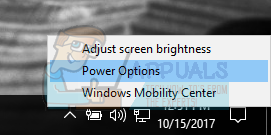
If you own a PC and don't see this option, press Windows + S and type "choose a power plan". Click on the most relevant result.

- There will be many plans listed in the window. Click on "Change plan settings" in front of the power plan which is currently active on your computer.

- On this window, you will see an option "Put the computer to sleep". Make sure that the time limit is the one you are expecting. Change it to a lower value if is too high. Click "Save changes" and exit.

Solution 1: Resetting your Computer
We can try completely restarting your computer by plugging out the power source after shutdown or removing the battery. It may be possible that your cache or RAM is still retaining some data even after the shutting down/restart process. Shutdown your computer normally and after a few minutes plug out the plug/remove the battery. Now, wait for a couple of minutes before turning it back on. This might solve the problem but is more of a blind shot. If it doesn't, move on with the other solutions.
Solution 2: Checking your Browser
Browsers tend to exchange data with websites even when you are not using it. Website such as web.whatsapp or Skype etc. tends to use push notifications which keeps your browser awake which in turn keeps your PC awake. You should try closing all of your browsers properly using the task manager and then wait to see if the computer goes into sleep mode. If it does, you can easily diagnose which website is causing the problem. Start with interactive websites (WhatsApp, yahoo, live, Skype), etc. and once diagnosed, refrain from keeping the tab open.
Solution 3: Checking Connected Devices
Several connected devices require "always-on" correspondence with your computer. It is possible that a device is connected to your computer which is disrupting the sleep timer, hence, disabling your computer to go to sleep. These devices include wireless mouse/keyboard, Xbox console or devices, interactive speakers, or some other external device (even a USB or hard drive!).
Unplug these devices from your computer and wait for the timer to put your computer to sleep mode. If the issue still persists, feel free to plug these devices back on and proceed with further solutions.
Solution 4: installing the latest Windows Updates
Windows roll out important updates targeting the bug fixes in the operating system. If you are holding back and not installing the Windows update, we strongly recommend that you do. Windows 10 is the latest Windows operating system and new operating systems take a lot of time to get perfect in every regard.
There are a lot of issues still pending with the OS and Microsoft rolls out frequent updates to target these issues.
- Press the Windows + S button to launch your start menu's search bar. In the dialogue box type "Windows update". Click the first search result which comes forward.

- Once in the update settings, click on the button which says "Check for updates". Now Windows will automatically check for updates available and install them. It may even prompt you for a restart.
- After updating, restart your computer and check if your issue got fixed.
Solution 5: Turning off Cortana
Cortana is a new feature in Windows 10. It is a virtual assistant which monitors your computer usage and aims to help you by giving suggestions. It also responds to voice commands and has the capability to perform small tasks like making an appointment or playing some music.
The voice command "Hey Cortana" has been known to cause problems with sleep in Windows. Turns out that due to some technical problem or a bug, the computer always stays awake to listen to the command "Hey Cortana" made by the user. We can try disabling Cortana and check if this solves the problem. If it doesn't, feel free to turn her back on.
- Press Windows + S to launch the search bar of your start menu and type "Cortana" in the dialogue box. Open the result which says "Cortana and search settings".

- Uncheck all options in the settings menu. This will turn off Cortana from your computer.

- Restart your computer and check if the problem still persists.
Solution 6: Turning off Hybrid Sleep
Hybrid sleep is a combination of sleep mode and hibernation. The contents of the RAM are copied to non-volatile storage (just like in regular hibernation) but then, instead of powering down, the computer enters sleep mode. This approach aims to combine the benefits of sleep mode and hibernation. The machine can resume instantaneously while also powering down to save energy.
Many users reported that because of hybrid sleep, their computer wouldn't sleep at all. After disabling hybrid sleep, the computer seemed to sleep normally after the set time. We can try disabling hybrid sleep from your power settings and check if it works.
- Right-click on the battery icon present at the bottom right of your screen and click "Power Options".

If you own a PC and don't see this option, press Windows + S and type "choose a power plan". Click on the most relevant result.
- There will be many plans listed in the window. Click on "Change plan settings" in front of the power plan which is currently active on your computer.
- Now click "Change advanced power settings" located in the near middle of the screen.

- Now expand the category of Sleep and open Hybrid Sleep. Set both options (on battery and plugged in) to off using the drop-down. Press Apply to save changes and exit. Restart your computer and check if this makes any difference.

Solution 7: Checking Device Wake-up Call Settings
Many devices have the ability to keep your computer awake. These devices can include the mouse, keyboard, speakers, etc. You should disable this setting for all the devices except for Ethernet and check if you still face the problem. In the majority of cases, a slight movement of the mouse or some external device communication with the computer disrupts the sleep timer. We are demonstrating how to disable the setting for a mouse. Make sure that you implement these for all the other devices as well (except the Ethernet).
- Press Windows + R to launch the Run application, type "devmgmt. msc" and press Enter.
- Once in the device manager, expand the category of "Mice and other pointing devices". Right-click on "HID-compliant mouse" and select Properties.

- Navigate to Power Management tab and uncheck the option which says "Allow this device to wake the computer".

- Press Apply to save changes and exit. Reboot your computer and check if the issue got solved.
Solution 8: Changing UpdateOrchestrator
Windows 10's UpdateOrchestrator scheduled task folder contains a task named as Reboot. This task will force your computer to wake up and install updates on whether or not any of them are available. This setting can be with-holding your PC from going into sleep mode. We cannot rely on simply removing the permissions. We need to change ownership so Windows won't be able to change the settings later on.
- Press Windows + R to launch the Run application. In the dialogue box type "control panel". This will launch your computer's control panel in front of you.
- Search for "Administrative Tools" in the search bar present at the top right side of the screen and open the first result which comes forth.

- Now you will be navigated to a folder where all administrative tools will be present. Navigate through them and open Task Scheduler.

- Now navigate to the following location:
Library > Microsoft > Windows > UpdateOrchestrator

- Now search for an entry named as "Reboot". Right-click it and select Properties.
- Now a new window will open. Navigate to the Conditions bar and uncheck the box which says "Wake the computer to run this task". Press Ok, save changes and exit. Now right click on Reboot and select Disable from the options.

- Now we need to make your account the owner of this file. Navigate to
C:\Windows\System32\Tasks\Microsoft\Windows\UpdateOrchestrator
It is called "Reboot" with a file extension. Right-click it and select Properties from the list of options available.

- You can make yourself the owner of the file.
Restart your computer for the changes to take effect and check if the problem is solved
Solution 9: Downgrading the version of Intel Management Engine Components Driver
We will download the Intel Management Engine Interface Driver (version 9 or 10) and exploit the show or hide updates package to stop the system from installing version 11 again. We will have to pause the update service of your computer using the services menu to ensure that Windows doesn't automatically install the version 11 itself.
- Type "services. msc" to launch the services window where all the services present in your machine are listed.
- Once in services, navigate to the near bottom of the screen and locate Windows Update. Right-click it and select Properties.

- After stopping the process, click on the Startup Type option and select Manual from the list of options available.

- Press Ok to save changes and exit. Restart your computer for the changes to take place.
- Navigate to HP's official drivers' download site and enter the model of your machine.
- Once you have selected your machine and are redirected to the drivers' page, expand the option of "Driver-Chipset" and download "Intel Management Engine Components Driver".

- Now install the downloaded software.
- Once you have installed it, download the Windows 10 Show or Hide updates package from Microsoft.
- Now run the downloaded package. After Windows scans your computer, you will be given two options. Select the one which says "Hide updates".

- In the next window select Intel Management Engine Components Driver and hide it. This will ensure that you don't update regarding the 11 Edition.
- Type "services. msc" to launch the services window where all the services present in your machine are listed.
- Once in services, navigate to the near bottom of the screen and locate Windows Update. Right-click it and select Properties.

- Click on the Startup Type option and select Automatic from the list of options available.

- Restart your computer and check if your computer goes to sleep correctly.
Note: You don't need to uninstall version 11 before installing version 9 or 10. The presence of some version of the driver is required in order to downgrade it.
- Right-click on the battery icon present at the bottom right of your screen and click "Power Options".
If you own a PC and don't see this option, press Windows + S and type "choose a power plan". Click on the most relevant result.
- Click on "Choose what the power button do" located at the left side of the window. Note: Follow the exact same steps for the option "Choose what closing the lid does".

- Click the options "Change settings that are currently unavailable" located at the near top of the screen. This will enable you to amend the checkboxes at the bottom of the screen.

- Uncheck the option which says "Turn on fast startup (recommended)". Press Ok to apply changes and exit.

- Now open an elevated command prompt (Windows + S, type "command prompt" in the dialogue box, right-click on the application and select "Run as administrator").
- Type the following command and press Enter.
Powercfg –h off

- Reboot your computer and check if the problem got solved. Also upon reboot, update your BIOS and your graphics drivers.
Solution 10: Ignoring all Power Requests by srvnet driver
Another solution which the users reported was that they disabled all the power requests by the srvnet driver and the problem automatically disappeared for them. There can be many explanations for this phenomenon but there shouldn't be any assumptions without proper research. We will be executing the command on Command Prompt and check if this fixes anything for us.
- Press Windows + S to launch the search bar, type "command prompt" in the dialogue box, right-click on the result and select "Run as administrator".
- Once the command prompt, write the following command followed by the Enter key.
powercfg -requestsoverride DRIVER srvnet System

You can also reverse the changes if the solution doesn't work for you by executing this command:
powercfg -requestsoverride DRIVER srvnet
- Restart your computer and check if the problem got solved.
Solution 11: Disabling Media Sharing Settings
Windows has a feature to share media with other clients from your computer through the network. This feature can have traffic on your computer and may disrupt the sleep timer. We can try disabling it through advanced power options and check if this fixes the problem.
- Right-click on the battery icon present at the bottom right of your screen and click "Power Options".
If you own a PC and don't see this option, press Windows + S and type "choose a power plan". Click on the most relevant result.
- There will be many plans listed in the window. Click on "Change plan settings" in front of the power plan which is currently active on your computer.
- Now click "Change advanced power settings" located in the near middle of the screen.

- Expand the categories of "Multimedia settings" and "When sharing media". Set both options (on battery and plugged in) to "Allow the computer to sleep". Press Apply to save changes and exit.

- Reboot your computer and check if the problem got solved.
Solution 12: Starting Computer in Clean-Boot state
If all the above solutions don't work, it is recommended to restart your computer. If it doesn't bring any improvement, we can try Clean Booting. This boot allows your PC to turn on with a minimal set of drivers and programs. Only the essential ones are enabled while all the other services are disabled.
- Press Windows + R to launch the Run application. Type "msconfig" in the dialogue box and press Enter.

- Navigate to the Services tab present at the top of the screen. Check the line which says "Hide all Microsoft services". Once you click this, all Microsoft related services will be disabled leaving behind all the third-party services.
- Now click the "Disable all" button present at the near bottom at the left side of the window. All the third-party services will now be disabled.
- Click Apply to save changes and exit.

- Now navigate to the Startup tab and click the option of "Open Task Manager". You will be redirected to the task manager where all the applications/services which run when your computer starts will be listed.

- Select each service one by one and click "Disable" at the bottom right side of the window.

- Now restart your computer and check if the computer goes to sleep mode successfully. If it does, it means there was an external program that was causing the problem. Search through your installed programs and determine which application is causing your problems. Follow the next solution to determine if the system registers a process that is disrupting your computer's sleep cycle.
Solution 13: Checking which Processes are Disrupting the Sleep Cycle
Windows has an inbuilt command which lets you identify which process/application is causing the sleep process on your computer to halt. Once you have identified the application/process correctly, you can stop them.
- Press Windows + S, type "command prompt", right-click on the application and select "Run as administrator".
- Once in the elevated command prompt, type the following command and press Enter.
powercfg /requests
- Now all the processes/applications will be listed in front of you which are not letting the computer sleep.
Note: This tool isn't perfect and doesn't list all the processes/applications necessary. Try disabling your antivirus, VPN services, unplugging USB's, and monitoring applications (such as CC Cleaner).
To disable a service which is the culprit, press Windows + R and type "services.msc". A new window will pop up containing all the services running on your computer. Double-click the one which is causing the problem, stop the service and select Startup Type to Disabled. Press Ok to save changes and exit.
To uninstall an application, open the control panel and select Uninstall a Program. All the programs installed on your computer will be listed here. Right-click the one which is causing your problems and select "Uninstall".
Solution 14: Closing Edge in the Background
In some cases, Microsoft Edge runs in the background while you are using your computer and it prevents the computer from going into sleep. This behavior is usually implemented to prevent interruptions during browsing but it can be a hectic task to turn this off on the browser. Therefore, you will have to turn the Browser off from the task manager to get rid of it. For that:
- Press "Windows" + "R" to open the Run prompt.
- Type in "taskmgr" and press "Enter" to launch the task manager.

Running the Task Manager - Click on the "Processes" tab and look for Microsoft Edge entry in the list.
- Click on the Microsoft Edge Process to select it and then click on "End Task" to close out of the browser completely.
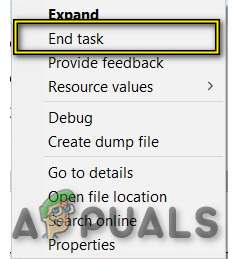
End Task in Task Manager - Check and see if doing so has fixed the issue and if Windows now goes into sleep.
Solution 15: Generating Sleep Diagnostics Report
In some situations, there might be multiple background services or applications that are preventing your computer from going into sleep. Some services can run in the background and the computer thinks that there are still tasks being performed that need the screen to be on and it doesn't go into sleep mode. We will be generating an in-depth sleep report and check which programs are currently running that aren't letting the computer sleep.
- Press "Windows' + "R" to open the Run prompt.
- Type in "cmd" and press "Shift" + "Ctrl" + "Enter" to give admin permissions.
- Type in the following command to generate an in-depth report on which programs aren't letting your computer go to sleep.
powercfg /SYSTEMSLEEPDIAGNOSTICS
- It will also give you the location where this report has been saved.

Generating the Report - Navigate to this location and open the report with a browser of your choice.
- Using this report you can now identify the processes that are keeping your computer out of the sleep mode.
Solution 16: Remove Physical Hurdles
This solution might seem odd to most people but sometimes when you put your mouse down, your Mousepad or the surface where you have placed the mouse might be vibrating due to which the mouse might be slightly slipping. This can prevent the computer from going to sleep because the mouse is constantly moving and although the cursor might seem stationary, it might actually be moving slightly. So what we found useful was to remove the mouse pad or to make sure that the mouse wasn't moving at all.
Solution 17: Closing out of Steam
Steam is usually a suspect in situations like these because it can sometimes keep running some processes in the background that triggers the computer to think that you need to screen to be ON and this can prevent the computer from going into Sleep. Therefore, it is best that you close out of Steam at least temporarily to check.
- On your desktop, click on the "Upwards" arrow icon to open the more items option.
- Right-click on the "Steam" icon and then select the "Exit" option.

Clicking on the "Exit" option - Once Steam has been exited, check and see if the computer can go to sleep.
Note:You should also try moving the Steam off of Desktop if there are any shortcuts or files there. This seems to fix the issue in some cases. Also, if you wanna leave it on in the background, try moving Steam to the Library mode instead of the homepage. This has to do with the software usually loading some videos or audio while on the homepage which leads the computer to think that the software is still in use.
Solution 18: Running a Trace
This is a form of trace which should help you figure out the processes that prevent your computer from going into the sleep mode. In order to run this, we will first be opening an administrative command prompt and type in some commands to run the test. In order to do that:
- Press "Windows" + "R" to open the Run prompt.
- Type in "cmd" and press "Shift'+ "Ctrl" + "Enter" to provide administrative privileges.

Running the Command Prompt - Type in the following command to initiate the trace.
cd %USERPROFILE%/Desktop
- After that, type in the following command to start tracing the activities.
powercfg /energy
- It will take 60 seconds to finish this trace once it starts and try to put your computer to sleep while the trace is being run.
- It should also give you the location where it has saved the trace that it runs when it finishes in sixty seconds.

Running the Trace - Now, you should be able to pinpoint the file that prevents you from going into sleep mode.
Solution 19: Allowing Only a Magic Packet to Wake the PC
Sometimes the network card that you are using might be waking the computer and some of its power settings might need to be reconfigured in order for the sleep function of your computer to work properly. Therefore, in this step, we will be reconfiguring some of the network card power settings. For that:
- Press "Windows" + "R" to launch the Run prompt.
- Type in "devmgmt.msc" and press "Enter" to launch the device manager window.

Running Device Manager - Expand the Network Adapters drivers and right-click on the network driver that you are using.
- Select "Properties" from the list of options and click on the "Power Management" tab.
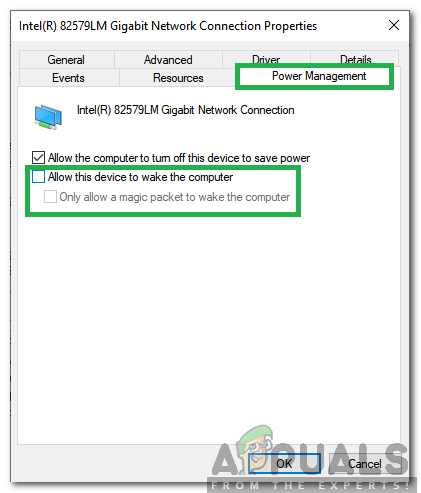
Clicking on the power management tab and ucheck these options - In the power settings, check the "Only allow a magic packet to wake this Device" option and click on "OK" to save your changes.
- Check and see if doing so fixes the issue.
Solution 20: Determining the Last Wake
This solution is only applicable if your computer suddenly wakes back up from the Sleep mode. In this, we will be using the power cfg details to determine what process caused the computer to wake back up from the sleep mode by running some commands in the command prompt.
- Press "Windows" + "R" to open the Run prompt.
- Type in "cmd" and press "Shift'+ "Ctrl" + "Enter" to provide administrative privileges.

Running the Command Prompt - Type in the following command to initiate the last wake trace.
powercfg /lastwake
- It should now display a wake source on your screen.
- It will most probably be a driver inside the device manager of your computer and you can easily go into the device management window and either uninstall it or replace it with a newer version of the driver.
Solution 21: Closing out of Utorrent
It is possible that Utorrent is running in the background even though you have closed it from the taskbar. The program keeps on downloading from torrents or seeding other torrents in the background even if you close out from the application. Therefore, in this step, we will be eliminating it from the app tray and the task manager. For that:
- Press "Windows" + "R" to open the Run prompt.
- Type in "taskmgr" and press "Enter".
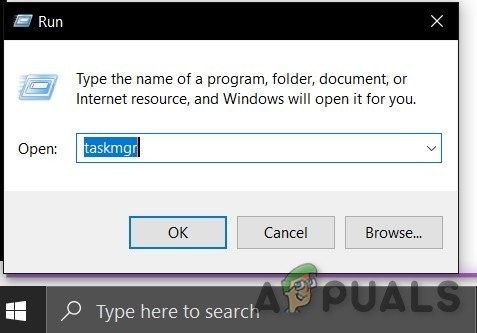
taskmgr in Run - Click on the "Processes" tab and click on "Utorrent" from the list of processes to select it.
- Once selected, click on the "End Task" button to end the process.
- After that, click on the "Startup" tab and select "Utorrent" in it as well.
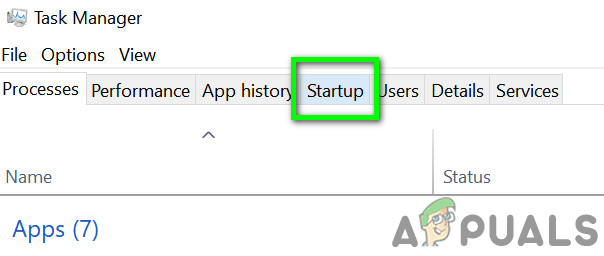
Navigate to Startup Tab of the Task Manager - Click on the "Disable" button on the task manager to end the process.
- Check and see if the issue still persists.
Solution 22: Power cycling your Computer
In some cases, the issue might be encountered if your RAM or Pagefile isn't being cleared properly and it can end up preventing the computer from going to sleep. Therefore, you can try to completely power cycle your computer and get rid of the static electricity being stored by the components to fix this issue. In order to do that:
- Completely shut down your computer and wait for it to power down completely.
- Take out the power cable from both the CPU and the monitor.

Unplugging the power from the wall socket - Press and hold the power button on both the CPU and the monitor for at least 10 seconds.
- Wait for an additional 2 minutes and turn your computer on.
- Check and see if doing so has fixed the issue with your computer.
Solution 23: Unplug Controller
Some devices in particular that can end up causing this issue are Xbox and PS4 controllers. These devices weren't showing up in any of the tracing tests that we ran so far and they were preventing the computer from going to sleep. Therefore, if you have connected an Xbox One, Xbox 360, PS4 or any other controller to your computer, it is best to temporarily disconnect it and check if your computer goes to sleep.
Solution 24: Reinitializing Power Settings
If your computer is stuck between the state of the power settings being set to always on and turn off after some time, the issue might be seen. What we can do to get rid of this issue is to reinitialize these settings by selecting one and then changing it to the other. For that:
- Press "Windows" + "R" to open the Run prompt.
- Type in "control" and then press the "Hardware and Sound" option.

Open "Hardware and Sound" - In the hardware and sound settings, click on the "Power Options" and then select the "Change Plan Settings" option in front of the power plan that you are using.
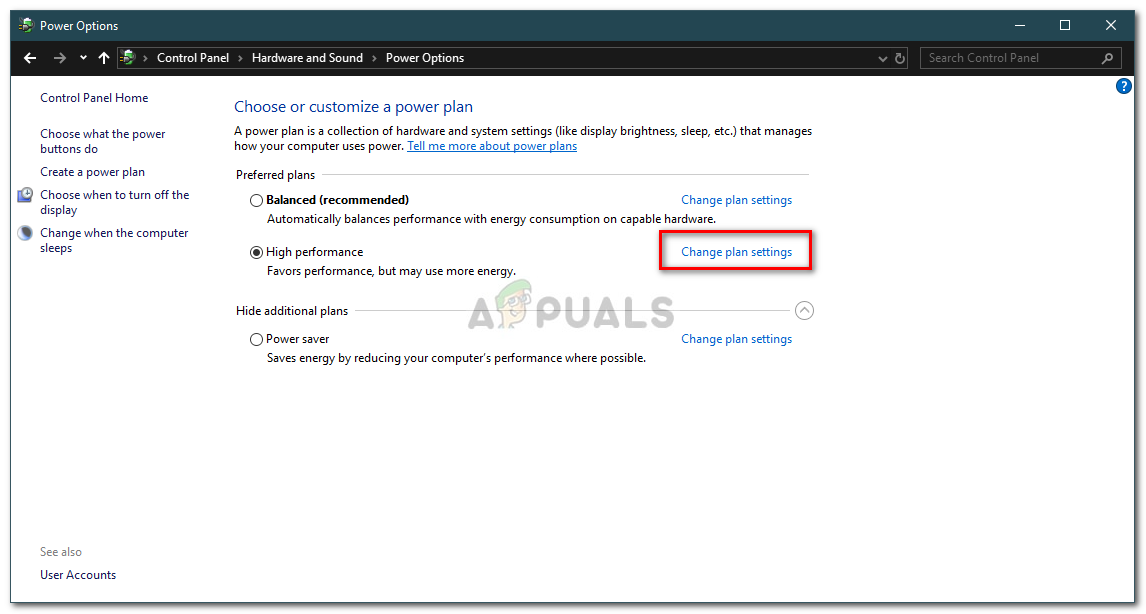
Power Plan Settings - Now Change the "Turn off the Display" and the "Put the computer to sleep" options to "Never".
- Click on the "Save Changes" option to save your changes.
- Wait for at least 5 minutes and go back into the change plan settings option.
- Now, change the settings back to what you want them to be and save your changes.
- Check to see if the issue is fixed by doing this.
Solution 25: Installing Missing Drivers
It is possible that some important drivers on your computer have gone missing or have been corrupted due to a system failure. Therefore, in this step, we will be checking the computer for missing drivers from the device manager and update or install any that are missing. For that:
- Press "Windows" + "R" to open the run prompt.
- Type in "devmgmt.msc" and press "Enter" to launch the device manager.

Running the Device Manager - In the device management window, expand each option one by one and look for any drivers with a yellow icon.
- This icon indicates that the following drivers are either missing or have been improperly installed.
- Right-click on the drive that has that icon and select the "UpdateDriver" option.
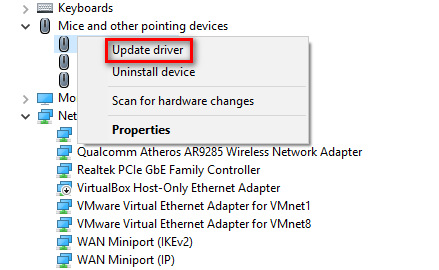
Updating the driver - Follow the on-screen instructions to update your driver and it should automatically search the windows update for new driver updates and install them for you.
- Alternatively, you can also use Driver Easy to install missing drivers.
- After installing all the missing drivers, check to see if the issue still persists.
Solution 26: Stopping WMP Service
In certain situations, the WMP service that is most probably enabled on your computer might be preventing it from going to sleep by running in the background. The service is by default enabled and allowed to run without interference so we will be stopping it in this step to check if it really is the culprit behind this issue.
- Press "Windows' + "R' to open the Run Prompt.
- Type in "services.msc" and press "Enter" to open the service management window.
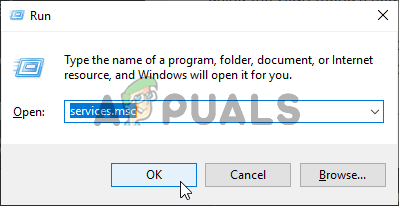
Running Services.msc - In the service management window, scroll down and look for the "Windows Media Player Network Sharing Service".
- Double click on it and then click on the "Stop" button.

Clicking on the "Stop" button - Click on the "Startup Type" and select "Manual" from the list.
- Save your changes and exit out of the services window.
- Check and see if doing so has fixed the issue with your computer's sleep.
Solution 27: Checking and Stopping Wake Timers
Windows can be configured to wake at certain times for important functions such as Windows Update. But sometimes this can be annoying if you want the computer to stay in sleep mode. Therefore, in this step, we will be checking to see if there are any wake timers set on your computer and then disable them promptly. For that:
- Press "Windows" + "R" to open the Run prompt.
- Type in "cmd" and then press "Shift' + "Ctrl" + "Enter" to open with administrative privileges.

Running Command Prompt - Type in the following command to check for any active wake timers.
powercfg /waketimers
- After running the command, the wake timers set on your computer will be displayed on the screen.
- In order to disable these tasks from running, press "Windows' + "R" to launch the run prompt and type in "taskschd.msc".
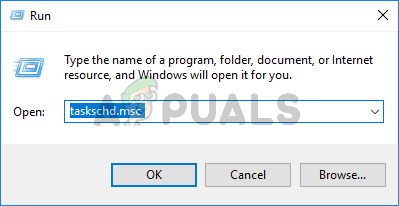
Type taskschd.msc in the Run to open Task Scheduler - Press "Enter" to launch the task scheduler window.
- Inside the Task Scheduler, click on the tasks that have their status as "Ready" and locate the one that was displayed to us in the 4th step.
- Click on the "Disable" option from the right side to prevent the task from being run.

Clicking on "Disable" - Check and see if doing so has fixed the issue with your Computer not going to sleep.
Solution 28: Disable Wake Timers
It is possible that you have enabled wake timers on your computer but you are unable to disable these services from awaking your computer. Therefore, in this step, we will be disabling wake timers on our computer's power plan, and doing so will prevent your computer from being waked by a background service. For that:
- Press "Windows" + "R" to open the Run prompt.
- Type in "control" and then press "Enter" to launch the control panel.

Accessing the Classic Control Panel interface - In the control panel, click on the "Hardwareand Sound" option and then select the "Power Options" button.
- Select the "Change Plan Settings" button and then click on the "Change Advanced Power Settings" button.
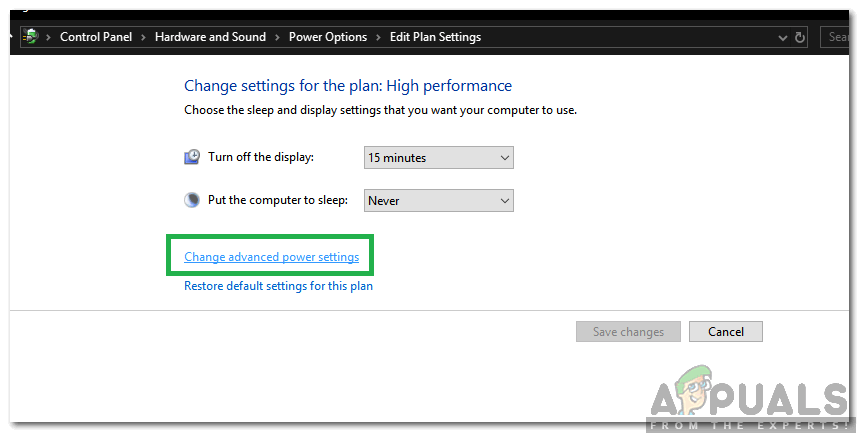
Clicking on the "Change Advanced Power Settings" option - Expand the "Sleep" option and then expand the "Allow Wake Timers" option.
- Click on the "Setting:" option and from the dropdown, select "Disable".
- Click on "Apply" and then select "OK".
- Check to see if doing so has fixed the issue for your computer.
Voice Meter is an application that is also known to malfunction with the sleep function of Windows.
Note:If you are on an outdated version of Bios, this error can be triggered due to certain missing features/glitches that some versions of the Bios tend to have. Therefore, it is recommended to immediately apply a Bios update if your Bios is outdated and you are facing this issue.
How to Set Sleep Timer on Laptop Windows 10
Source: https://appuals.com/fix-windows-10-wont-sleep-automatically/
0 Response to "How to Set Sleep Timer on Laptop Windows 10"
Post a Comment